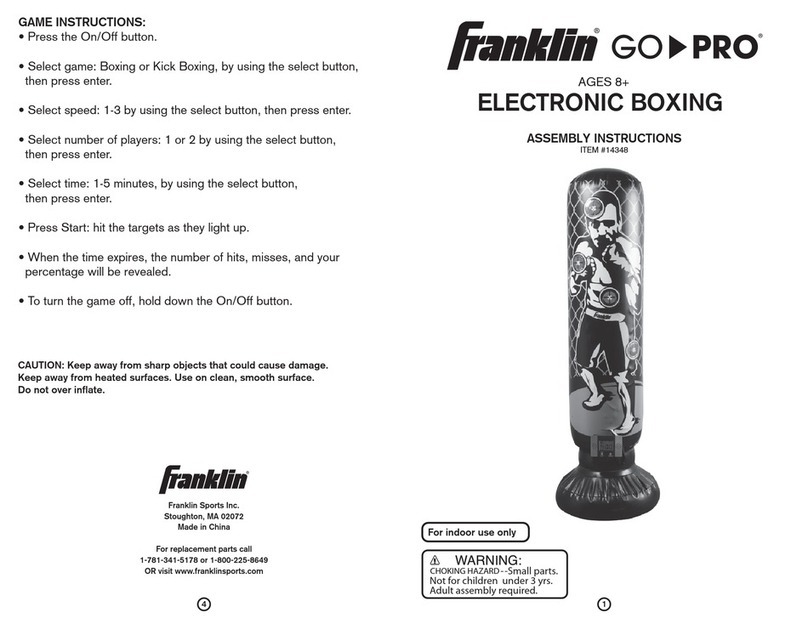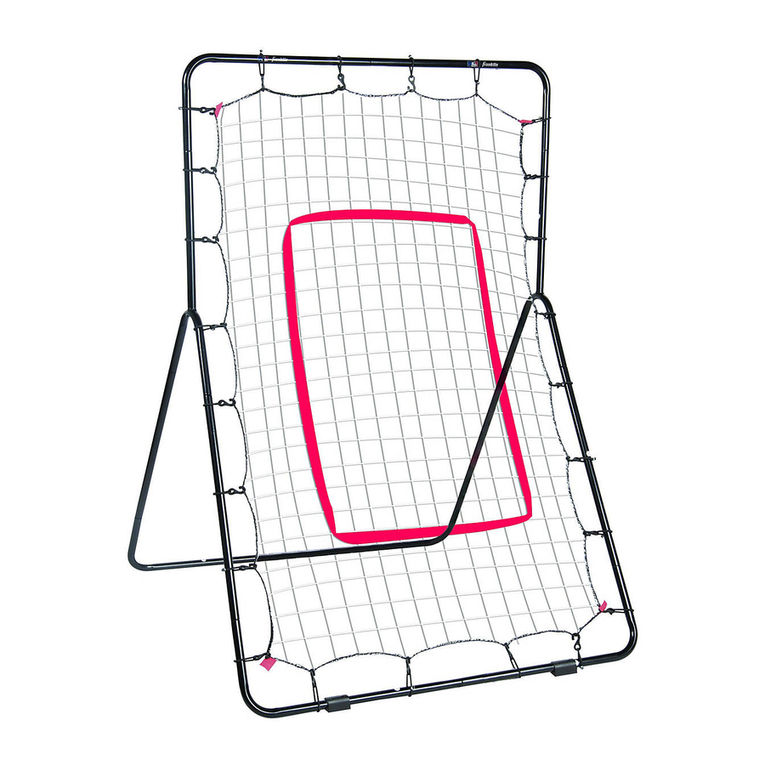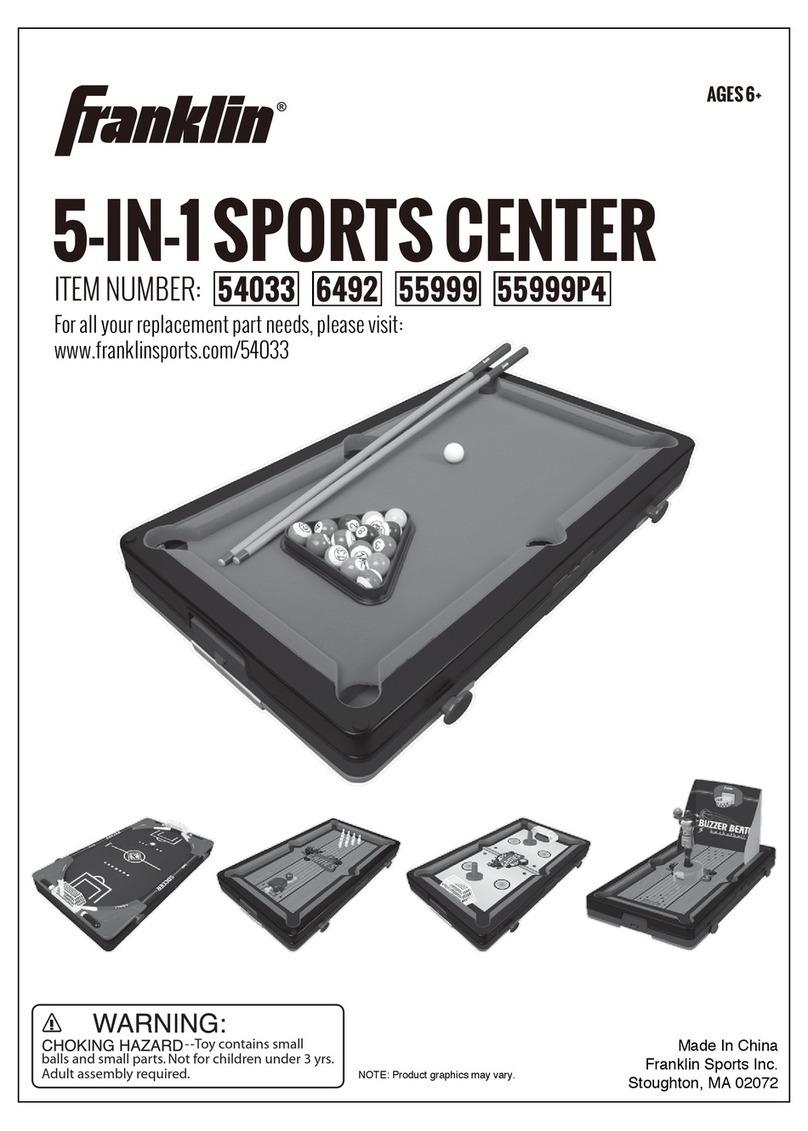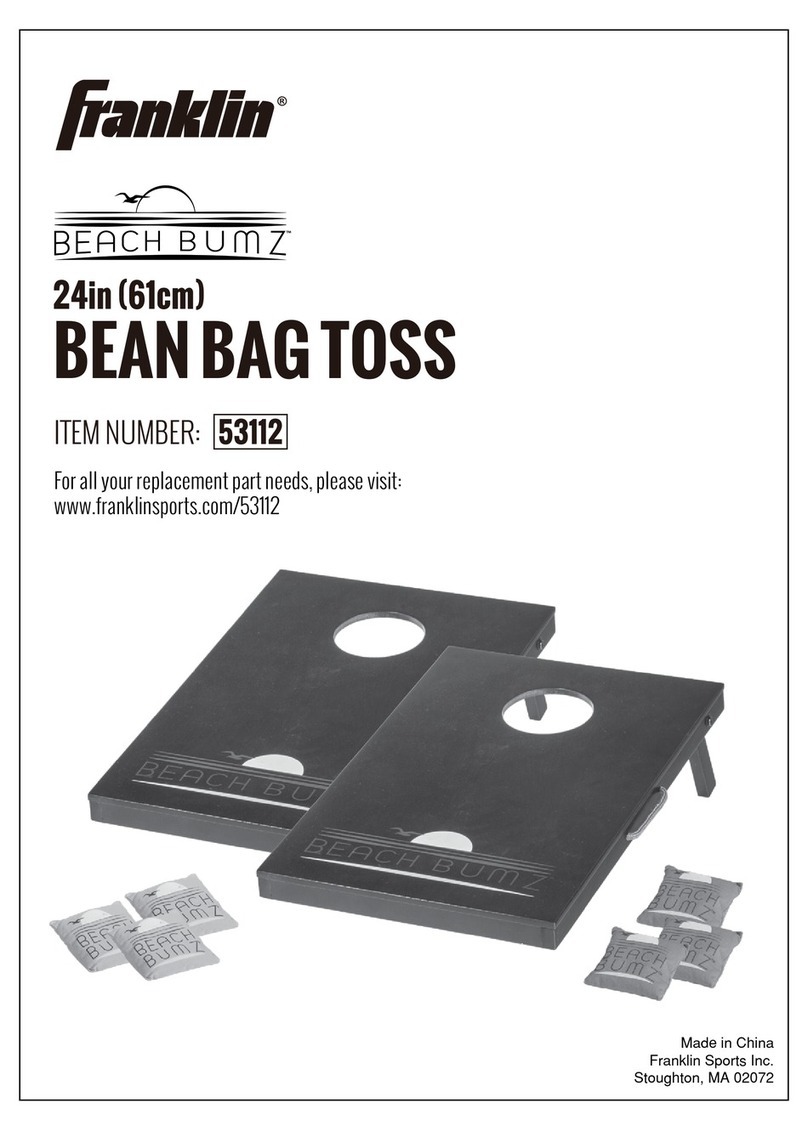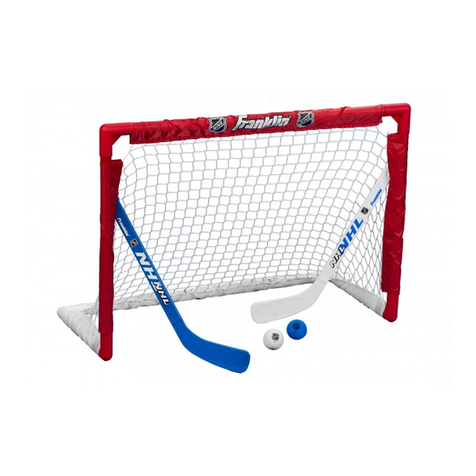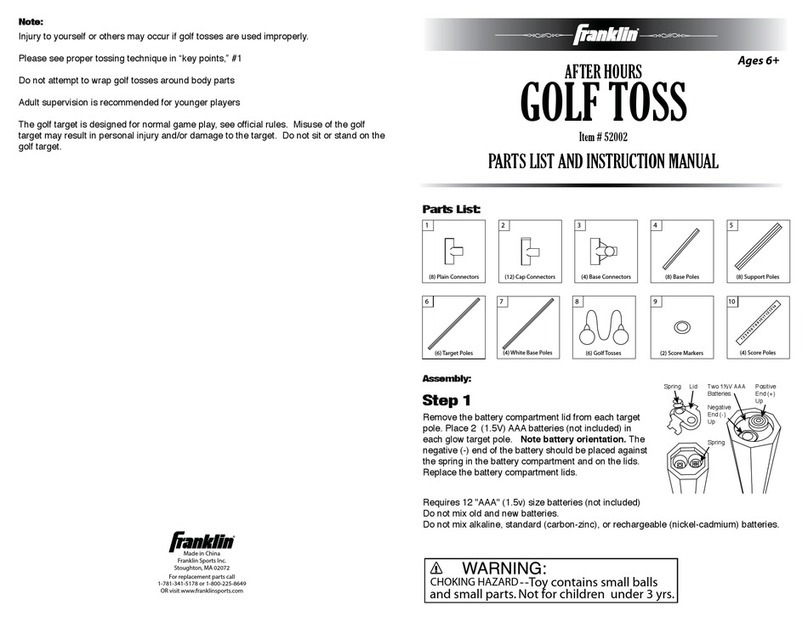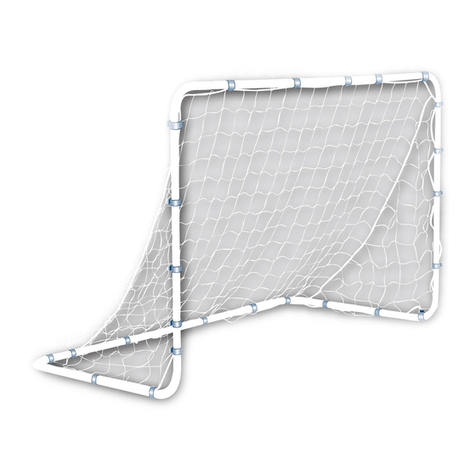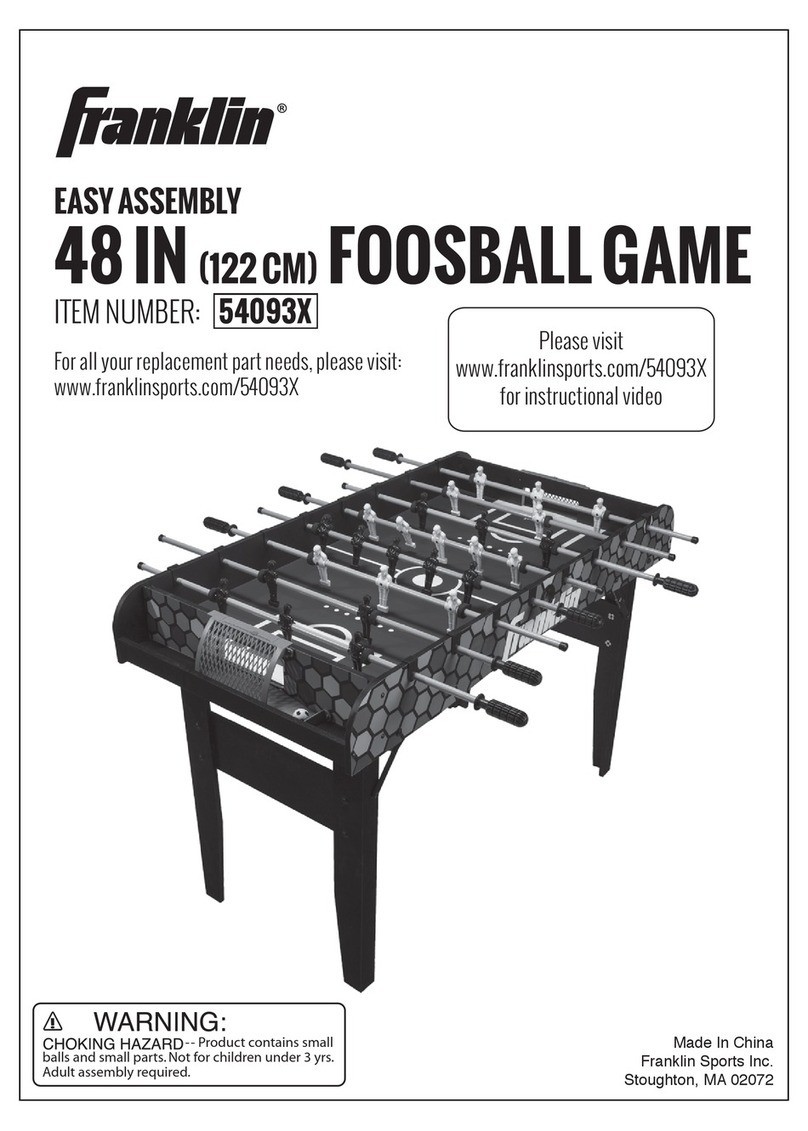Establishing the Strike-Zone:
To learn correct batting technique,establishing and
understanding the strike-zone is paramount.
Figure 1 shows that the ball must be pitched between the left
and right side of home plate and pass between your shoulders
and knees.
Delivery:
Figure 4 shows the proper “delivery” and swing plane.
Follow-Through:
Figure 4 shows the proper “follow-through.”
s2OLLWRISTSOVERTOPOFGRIP
s2ELEASEHEADANDALLOWEYESTOTRACKBALL
s&RONTFOOTROLLSANDOPENS
s2EARFOOTHEELSHOULDBEOFFGROUNDWITHTOES
dug in for power drive towards 1st base
s%YESFOCUSEDONTHEBALL
s(EADINCENTEROFSHOULDERS
s(ANDSWRISTSANDARMSCOCKED
s2OTATEHIPSANDBEGINWEIGHTSHIFT
toward front foot
s3TEPTOWARDPICTUREWITHFRONTFOOT
s-OVEREARKNEETOWARDBALLPOSITION
s$RIVEWEIGHTHANDSARMSHIPSANDLEGS
of rear foot toward contact point
s3WINGTHROUGHBALL
s+EEPHEADANDEYESONTARGET
s%XTENDFRONTARM
s,EFTHANDONTOPOFBATATCONTACTPOINT
(for right-handed batter)
s2IGHTHANDANDWRISTLOCKEDUNDERNEATH
left hand at contact (for right-handed batter)
s2EARFOOTROTATESTOWARDPITCHER
s#ONTACTBALL
Helpful Tips on Hitting
The Bat:
The bat should be the proper length and weight for you to swing
comfortably. A bat that is too large will slow down your swing,
reducing power transfer to the ball. A bat that is too light will
reduce critical mass generated by your strength and the bat,
reducing ball flight.
The Grip:
A good, strong grip is needed to transfer the power generated by
the shoulders, arms, and body through the bat and into the ball.
If your grip is not strong enough, the bat will shake loose during
contact and result in a weak power transfer. Working on your grip
strength and wearing batting gloves designed to enhance grip
strength will improve your power. The correct position of the
bat handle inside your grip is over the balls of your hands (the
junction point of fingers and palm). Not deep in your palm. This
improves wrist strength and power transfer to the ball.
The Swing:
The correct swing is made up of four components – Address,
0OWER3TANCE$ELIVERYAND&OLLOW4HROUGH
Address:
&IGURESHOWSARELAXEDANDPROPERhADDRESSv
s"ATHEADUP
s%YESLEVELANDFACINGFORWARD
s#HINABOVESHOULDER
s3HOULDERSLEVEL
s!RMSUPANDBACKATCHESTLEVEL
s2EARELBOWDOWNSLIGHTLY
s(ANDSBETWEENBACKFOOTANDKNEE
s+NEESBETWEENFEETANDSLIGHTLYBENT
s&EETSLIGHTLYWIDERTHANSHOULDERWIDTH
s"ACKFOOTSTRAIGHTTOWARDPLATE
s&RONTFOOTSLIGHTLYOPEN
s7EIGHTEVENLYDISTRIBUTEDOVERBOTHLEGS
Power Stance:
Figure 3 shows the proper “power stance.”
s%YESFOCUSEDONBALL
s2OTATEFORWARDSHOULDERTOBACKPOSITION
s(ANDSUPANDBACKWITHSHOULDERROTATION
s2OTATEHIPSSLIGHTLYTOGETHERWITHSHOULDERS
s#OCKHIPSSHOULDERSARMSANDWRISTFORRECOIL
s3HIFTBODYWEIGHTTOINSIDEOFREARFOOT
s"ACKFOOTSTRAIGHTTOWARDPLATE
®
